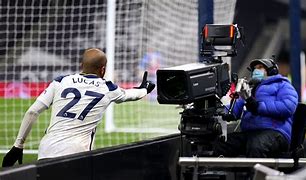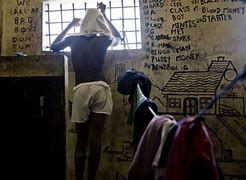
As the summer starts to reach its end, there’s a distinct feeling of trepidation hanging over this country. Inflation has been predicted to rise to 18 per cent, its highest level since 1976, while the cost of gas and electricity is set to explode, with prices likely to soar in October, and quite possibly again in January.
The cost of living crisis looms large in the minds of many.
This creates problems for football that are barely being discussed. The game remains reliant on the very people who are likely to be under a level of financial strain unknown before to keep their show on the road. So, what are the risks and what, if anything at all, can be done to protect clubs from this sudden fall in income?
The first thing to point out here is that Premier League clubs should be shielded from the worst of it all by a number of different factors. Their broadcasting revenues will remain high, while being in the Premier League should give any who get in bother the ability to borrow their way through whatever is to come.
There are risks for the Premier League, but these aren’t the same as the risks for clubs further down the pyramid. It’s expected that there will be a fall in subscriber numbers, for example, as people decide that TV subscription services have to be sacrificed if their families are to remain fed and kept warm this winter, but the likelihood of a complete collapse remains extremely low, and the bigger risk for the Premier League is that falling subscription numbers may mean a fall in the value of future TV rights sales.
But television money isn’t football’s only income. Broadly speaking, clubs have three main sources of income: broadcasting revenue, commercial revenue and match-day revenue. Even in the Premier League, match-day revenue makes up an average of 13 per cent of clubs’ overall revenues, and the biggest clubs bring in the most. Manchester United, for example, brought in just short of £4 million per home match during the 2018/19 season, the last full season for which such figures are available.
And the further down the football pyramid you go, the more dependent clubs are upon match-day revenue. That figure of 13 per cent jumps to 20 per cent in the Championship, and 30 per cent once the distorting effects of Premier League parachute payments are removed from the equation. And this proportion continues to rise as you drop down through the divisions.
It’s tempting to think that because so many fans buy season tickets that attendances will not be affected, but this seems unlikely to be the case, as evinced by a poll taken by The Independent at the end of July.
If travel to matches becomes unaffordable, then many may stay at home, and some might not get as far as even making that decision.
There are no available statistics, but almost all clubs offer the option to pay for season tickets in instalments, by direct debit or standing order. But if payments are defaulted upon, the associated season tickets become invalid and cannot be used. And of course, even those who escape that scenario may well decide that they can only continue to attend if they spend nothing on anything else at matches. And walk there.
Commercial revenues are also likely to be affected, although the extent to which this might happen is even more unpredictable. Businesses had already been shaken enough by the lasting effects of Brexit and the pandemic, and sponsorship of football clubs may end up severely affected, should the economy continue to flatline or fall into recession, as is widely predicted to happen before the end of the year.
The biggest clubs should be insulated from the worst, but the risk to smaller clubs could yet turn out to be as existential as the pandemic, and clubs needed government support to get through that. And for them, it really is a double-whammy because not only may they face the prospect of falling revenues, but costs are also likely to increase exponentially.
Lower division clubs are already reporting that the cost of their electricity could double or treble, with reports indicating that the cost of floodlighting matches could also double or even treble. For a League Two club, it has been estimated that this could mean an increase of £100,000, and while that sounds like chicken feed to a Premier League club, at that level of the game it could easily be the equivalent to the wages of a couple of players for an entire year.
Action is already being taken to try and cut down on these costs. At the end of July, the Isthmian League – one of the regional leagues starting at the seventh tier – confirmed that they would be giving clubs permission to bring kick-offs forward as the nights get shorter in order to try and cut down the size of electricity bills. Although newer technologies have made floodlighting more energy efficient, this remains an obvious concern.
At the grassroots level of the game, the effects have already been known about for some time. A study carried out earlier this year found that 2,600 grassroots clubs had folded over the course of 2021-22 due to a combination of the effects of the pandemic and the cost of living crisis, with a further 8,000 at risk over the course of this season.
For those amongst us who consider football as something more than a branch of the light entertainment business, for those who value the game for the role that it can play as a community hub and as a gateway to exercise, these are extremely troubling numbers.
The study carried out earlier this year was a follow-up on an October 2020 study which confirmed that 10 per cent of players did not return when lockdown restrictions were lifted, with 58% of parents citing affordability as an issue.
And while it is right that we should be concerned at how clubs themselves are going to cope with it all, the true cost of this winter may well end up being a human one. Arrigo Sacchi famously said that football is “the most important of the unimportant things in life”, and one of the key costs of this summer may well be almost invisible.
Going to the football is a social activity for many, a connection to the outside world that provides identity and companionship. For many people, the game is not simply an indulgent luxury that they can ‘afford’ to jettison, yet many may have to do anyway.
In a world in which millions may yet have to choose between feeding themselves and keeping themselves warm this winter, that most important of the unimportant things in life may yet come to feel somewhat less important. Perhaps, when the exact extent of this unfolding crisis becomes apparent, there will be moves to try and mitigate the worst of these affects on the most vulnerable in our communities.
Because football is about more than its clubs alone. It’s about the people who work in it and the people who watch it. And football should be talking about all of this, because it’s these bonds that hold it all together, whether we’re talking about the Premier League or a youth team playing on a recreation ground on a Sunday morning.
This country may be sleepwalking into a disaster that it still doesn’t seem able to fully understand and football is no exception.
- A Football365 report











